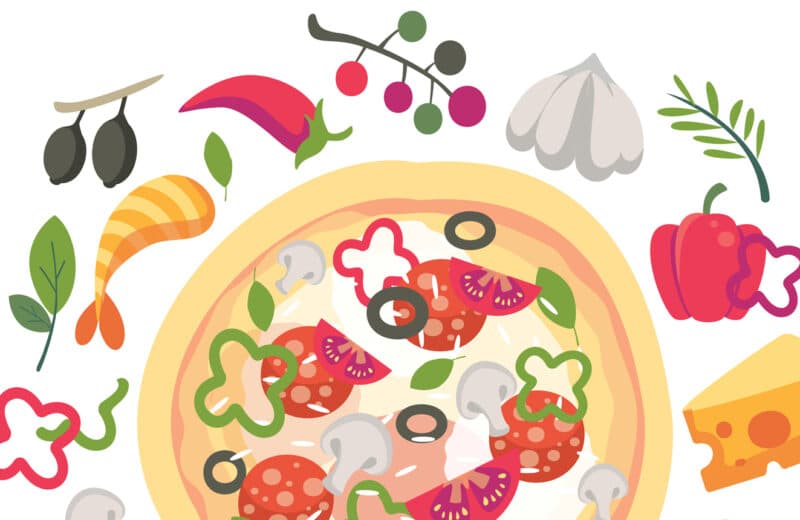Many older Americans have type 2 diabetes or prediabetes. In fact, even though many have not been diagnosed, one in four adults aged 65 or older have diabetes and nearly 50 percent have prediabetes. And what they eat matters.
More than a blood sugar problem
Though healthcare providers use blood sugar levels to diagnose diabetes, problems associated with type 2 diabetes extend well beyond blood sugar. Thus dietary treatment must address these other concerns as well. Blood sugar levels rise because muscle, fat, and liver cells become resistant to insulin (the hormone that ushers blood sugar into body cells) and ignore insulin’s signals. It’s this insulin resistance that’s at the heart of other problems too.
Blood pressure: Insulin resistance affects the nervous system, kidneys, and blood vessels in ways that increase blood pressure levels.
Cholesterol and triglycerides: Changes in fat metabolism often lead to high triglyceride and low HDL (good) cholesterol levels.
Heart disease and stroke: People with diabetes and prediabetes have increased risks for heart disease and stroke.
Cancer: Insulin resistance is likely one of the reasons that people with type 2 diabetes have increased risks for several types of cancer, including colon, post-menopausal breast, liver, pancreatic, endometrial and bladder cancers, as well as non-Hodgkins lymphoma.
Your best diet for diabetes in eight steps
Helping your body become more sensitive to insulin can help you with blood sugar management and reduce your risks for other problems associated with insulin resistance and diabetes.
1. Balance your diet. A health-boosting diet includes a variety of food groups and accounts for protein, carbohydrates and fats, says registered dietitian nutritionist and certified diabetes educator Jessica Crandall, R.D.N., C.D.E., national spokesperson for the Academy of Nutrition and Dietetics. Though many people blindly focus on protein, Crandall explains that this often leads people to eat too much unhealthful saturated fat and too few disease-fighting nutrients, such as fiber.
2. Trim calories. If you’re overweight and if your healthcare provider agrees that weight loss is beneficial, aim to lose a few pounds. You don’t need to drop gobs of weight to see better blood sugar control and better health overall. Research shows that losing as little as 5 percent of your starting weight — only 10 pounds for someone weighing 200 pounds — can lessen insulin resistance. Whittling off a few pounds also improves blood sugar, blood pressure, cholesterol and triglyceride levels. There are many ways to trim calories. Consider shrinking portions; decreasing sweets, sugary drinks and alcohol; swapping whole milk and whole milk dairy for low-fat varieties, avoiding fried and fatty foods, and adding more low-calorie vegetables to your plate.
3. Avoid excess sodium. Too much salt is bad for blood pressure, so compare food labels to choose lower sodium options. At home, use the saltshaker sparingly. Instead rely more on herbs, spices and a squeeze of fresh citrus fruits. When using packaged products, slash sodium by nearly 50 percent by mixing unsalted and regular products together. For example, combine a can of unsalted tomato sauce with a regular can of diced tomatoes.
4. Reduce saturated fats and eliminate trans fats. These unhealthful fats raise your risk of heart disease. Avoid trans fats by saying no to anything containing partially hydrogenated oils. To cut back on saturated fats, avoid the foods most likely to contain them, including whole milk dairy products, butter, coconut, coconut oil, fatty cuts of meat, poultry skin, bacon and sausage
5. Choose fish and other foods with omega-3 fatty acids. These fats are a boon to the heart. Sources of omega-3 fats include salmon, herring, sardines, rainbow trout, tuna, walnuts, ground flaxseed, chia seeds, canola oil and soybean oil
6. Eat lots of non-starchy vegetables. These low-calorie, low-carbohydrate nutritional stars should fill your plate and your belly. Not only are they good for your blood sugar, they are loaded with health-boosting, disease-fighting phytonutrients. Aim to eat one or more servings at most meals and snacks. Some examples include asparagus, beets, bell peppers, broccoli, carrots, cauliflower, eggplant, lettuce, radishes, spinach and tomatoes
7. Upgrade your carbohydrate choices. While it is true that carbohydrates turn into blood sugar, it’s not true that all carbohydrate-rich foods are similar in nutrition and in their ability to fight disease. Crandall recommends selecting carb-rich foods with at least 5 grams of fiber per serving, and to regularly eat fruits, whole grains, legumes, such as black beans and lentils, and starchy vegetables like peas. Go easy on refined grains, snack bars, desserts, pretzels and chips.
8. Spread carbohydrates over your day. The jump in blood sugar levels is related to the amount of carbohydrates you consume each time you eat. Instead of eating large amounts of carbohydrates once or twice daily, you’ll get better blood sugar control by spreading your carb intake out fairly evenly over three or more meals.
(Reprinted with permission from Environmental Nutrition, a monthly publication of Belvoir Media Group, LLC. 800-829-5384. www.EnvironmentalNutrition.com.)












